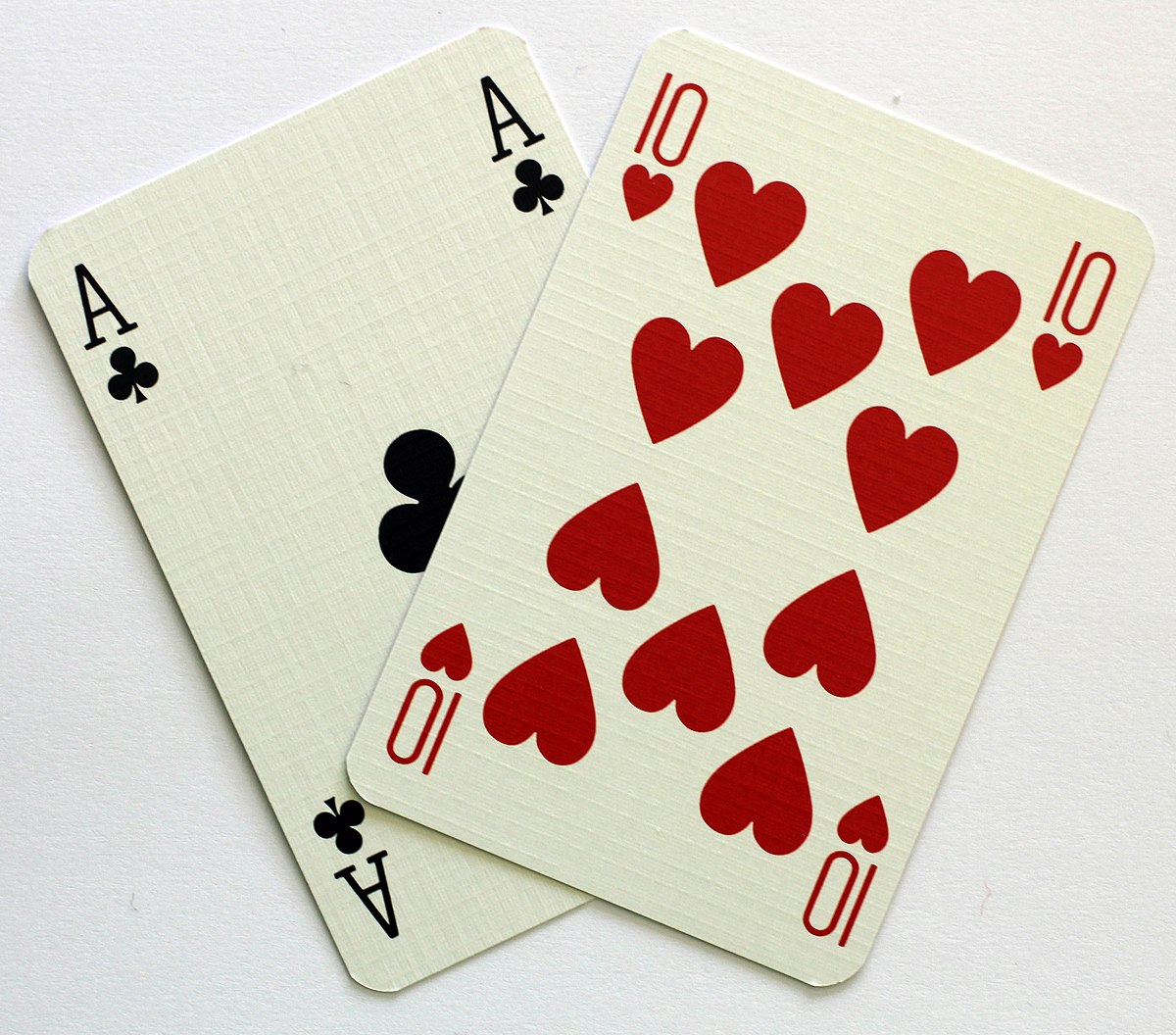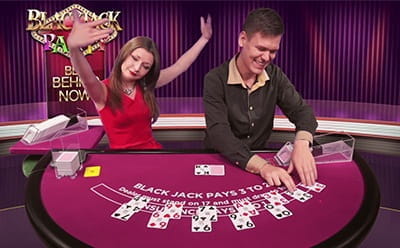Pontoon Gambling
On This Page
Lucky Red Casino is fully licensed by BeSoftware N.V. One of the most respected and trusted names in the online gaming industry. Our excellent selection of games and frequent casino promotions give players the ultimate combination of flexibility and value that has led to one of the highest levels of player loyalty in the industry.
Introduction

Pontoon is sometimes said to be an early version of blackjack. Today Pontoon is offered by Real Time Gaming, Playtech, Microgaming, Betsoft, Galewind Software, Nucleus and Cryptologic Internet casinos. In Pontoon, any five-card hand or a pontoon (same thing as a blackjack) pay 2 to 1, including after splitting. However there is no dealer up card and the dealer wins on ties. There are several other rule changes from blackjack so read carefully before playing.
- Pontoon is similar in many ways to Blackjack, but in others, such as not being able to see either of the Dealers cards and losing the hands if you tie with the Dealer, it is very different. Therefore, make use of the free play option most sites have to get used to the differences before you play for real money.
- Pontoon (Playtech) Review. Pontoon (Playtech) from Playtech was presented to the gambling world on Apr 15, 2016. Players can play Pontoon (Playtech) using their Desktop, Tablet, Mobile. Pontoon (Playtech) payout percentage is 99.64%. You can play online using bets from $0.01 to $1250 maximum. How to Play Pontoon (Playtech) for Fun.
Australian Pontoon, which is what Americans call Spanish 21, is a completely separate game, and is addressed on my page on Australian Pontoon.
Rules
Pontoon Gambling
Following are the usual rules.
- The game is played with eight 52-card decks, or two decks at Bovada.
- All cards have the same value as in blackjack.
- The ranking value of hands in pontoon is as follows:
- A pontoon, which is defined as an ace and any 10-point card, including after splitting
- A five-card trick, which is defined as any 5-card hand that has not busted. All five-card tricks are of the same value, the point total does not matter.
- A non-busted hand of 21 points of less with 4 or less cards. Hands will be ranked within this group according to the total number of points.
- A busted hand of 22 points or more.
- The dealer will deal each player two cards face up and two cards face down to the dealer.
- The dealer will peek at his cards for a pontoon. If the dealer has a pontoon he will immediately turn it over and collect all wagers and cards.
- The player may stand on any total greater or equal to 15, or on any 5-card hand.
- The player may hit at any point, including after doubling.
- The player may double on 2 to 4 cards, but only once per hand. The option includes after splitting, and once for each split hand.
- The player may split two cards of equal rank. The player may resplit once, up to a total of three hands, including aces. When the player splits the first card dealt to each hand shall be automatic.
- Player may draw and double after splitting aces.
- The 2-card 21 after splitting aces counts as a pontoon.
- If the player busts he immediately loses and forfeits his cards and total wager.
- After all players have played out their hands the dealer shall expose his two cards. Then the dealer shall continue to draw cards until he has a total of 17 points or more, except the dealer shall hit a soft 17. The dealer will also stop with any five-card hand.
- The dealer shall compare his hand to each player hand. A winning player pontoon or five-card hand shall pay 2 to 1. All other player wins shall pay 1 to 1 (even money).
- Ties lose.
Strategy
The following tables show the basic strategy for Pontoon under RTG, Playtech, Galewind, Betsoft and Cryptologic rules. Betsoft does not state the number of decks used, but they use six in all their standard blackjack games.
To use the strategy look up the player's hand along the left and across the number of cards along the top. The top of the strategy is for hard totals and the bottom for soft hands. The player should always split eights. The player should split aces under the liberal ace splitting rules above, but not under the Microgaming rules, or hypothetically if an ace and 10 after splitting aces was not a pontoon.
The first chart is appropriate for Real Time Gaming, Playtech, Galewind Software, and Cryptologic rules.

The next table shows the strategy under Microgaming rules.
The house edge is 0.38% under the default rules listed above. These rules are followed by Real Time Gaming, Playtech, Galewind Software, and Cryptologic.
At Microgaming casinos the rules are the same except split aces get one card each and the dealer stands on soft 17, in which case the house edge is 0.39%.
Rule Variations
Following are some alternative rules and the effect on the house edge.
- Aces and 10 after splitting aces is 21 points (not a pontoon): House edge increased by 0.49%.
- No draw to split aces (split aces get one card each): House edge increased by 0.49%.
- Dealer stands on soft 17: House edge lowered by 0.47%.
- Two decks (as opposed to eight): House edge increased by 0.35%. That is not a mistake. In Pontoon the more the decks the lower the house edge. I believe this is because it is easier to make 5-card tricks with more decks.
It is not a coincidence that both restrictions on split aces increase the house edge by the same amount, because if either rule is in effect the player should hit a soft 12.
Playtech
Click on image for larger version
I would like to thank Microgaming and Yechezkel Zilber for their contributions to this analysis.

Written by:Michael Shackleford
Blackjack Variations > Pontoon
In many cases, Pontoon is just another name for Spanish 21. In this case, we will only be referring to Pontoon, which originated from the UK.
Pontoon is played with standard 52-card decks, with anywhere from two to eight decks being used depending on the number of players involved. Its popularity has been increasing and been added to more and more offline and online casinos.
Before you continue, make sure you are familiar with the standard Blackjack rules in order to continue with the differences in here.
Pontoon Rules
Even though the ideal goal of the game is the same as that of standard Blackjack (reaching 21 worth in points, or beating the dealer in points value while not busting out) there are several additional rules to cover:
Some terminology is different, such as a “Hit” in Pontoon is called a “Twist” – “Stand” is called a “Stick” – “Double down” is called a “Buy” – and finally a “Blackjack” or a “21” is actually called a “Pontoon”, which are paid-out 2:1.
The dealer’s cards are both dealt face down – obviously taking away any advantage the players had in regards to odds.
The dealer waits for all players’ actions before even looking at his/her cards. So in the case that the player adds up to 21 against a natural 21 of the dealer, the player would actually beat it.
There is no “Push” in Pontoon; instead, players would lose any tied hands, except for the 21 situation mentioned in the above point.
If a player reaches up to a 5-card hand (5 cards in his/her position) without busting out, it would be considered an automatic win and paid-out 2:1.
Players can ‘buy’ on any 2, 3, 4 cards, and they may ‘twist’ after a ‘buy’. However, players can only ‘buy’ once per hand, and can only be ‘split’ up to 2 times.
Lastly, the dealer must ‘twist’ on 17 or lower, and players much ‘twist’ on 14 or lower.
How To Play Pontoon
Boat Gambling Myrtle Beach
As you can see, there is a good number of differences or additional rules to the game, but overall, it still has the same end goal.
Players make their bet, followed by the dealer dealing 2 cards per player (one by one to each) face-up and 2 cards for him/herself face down. The dealer does not look at his/her cards, not even to make sure there’s a ‘Pontoon’ there, instead, all players’ actions are taken care of first.
Once that is taken care of (any ‘splits’, ‘buys’ and ‘twists’), the dealer now looks at his/her cards to see if he/she should ‘twist’ or ‘stick’.
Whoever has a higher card, 21 or lower, wins – except in the case of a tie at 21, where it would be the only ties where players actually win the hand.
Pontoon Hand Examples
In order to explain some of the points above, here are some examples:
Let’s say you are dealt 3-4. You can now ‘buy’ as there is a 3 card in your hand. You can only ‘buy’ once per hand, so let’s say that gets you a 4, for a total of 11 points. You can and must ‘twist’ in hopes of a 10 to complete the ‘Pontoon.
Let’s say you are given 5-5, you can now ‘split’ it, meaning you bet the same amount and get 2 more cards for each 5. Let’s say you get the following 5-10 and a 5-5. The first hand of 5-10 you can either ‘twist’ in hopes to not bust out, or you can ‘stick’. The second hand you can ‘split’ one last time.
Let’s say instead of getting the 5-5 you got a 5-9 (14 points) – you will automatically have to ‘twist’ as the rule specifies players must ‘twist’ on 14 or lower, just like dealers must ‘twist’ on anything 17 or lower.
The last hand example is getting a 3-4-2-4 (13 points so far) – seeing that you have to ‘twist’ and that you have now 4 cards in your possession, you simply need 1 more card without busting out to win automatically. Reaching 5 cards without going beyond 21 means an automatic win for you – unless the dealer ties (gets 5 cards dealt too regardless of the point value), in which case the player unfortunately loses.
All you need is some practice to get the hang of it, but once again, it is quite simple… just follow your blackjack background with some minor alterations.